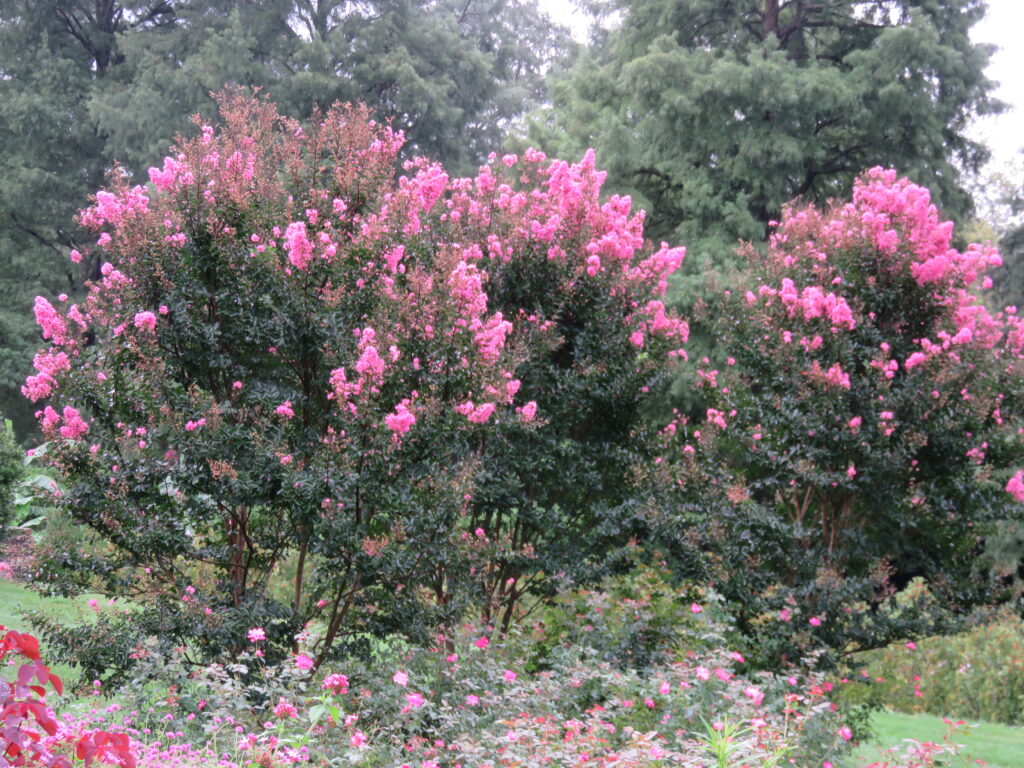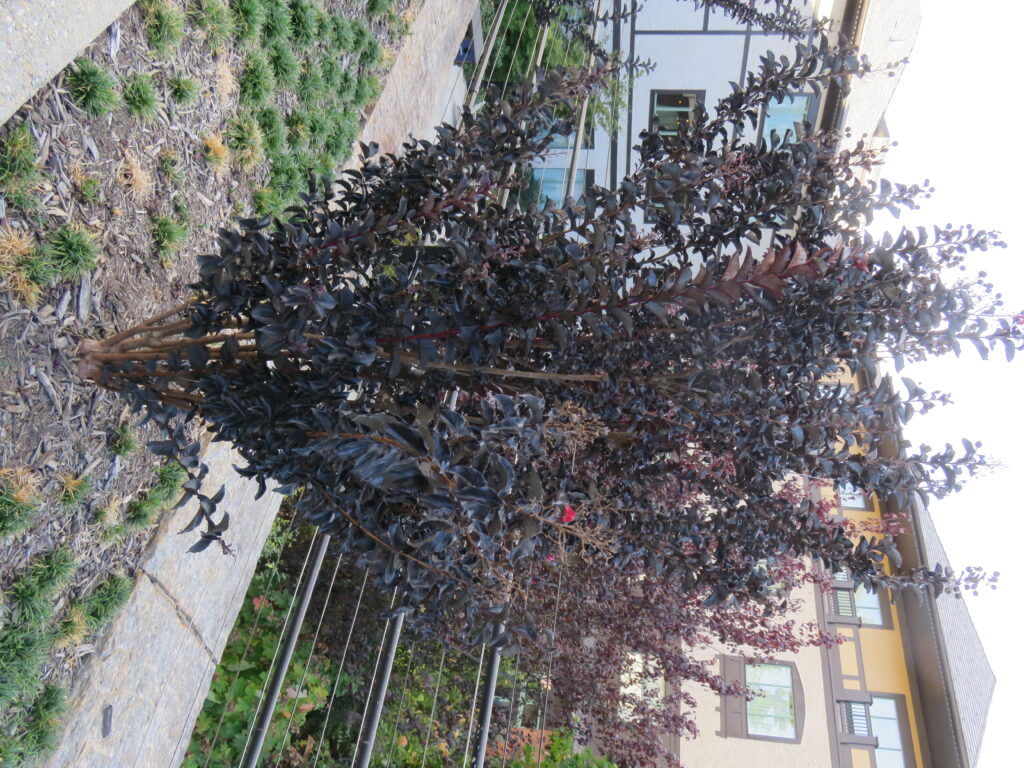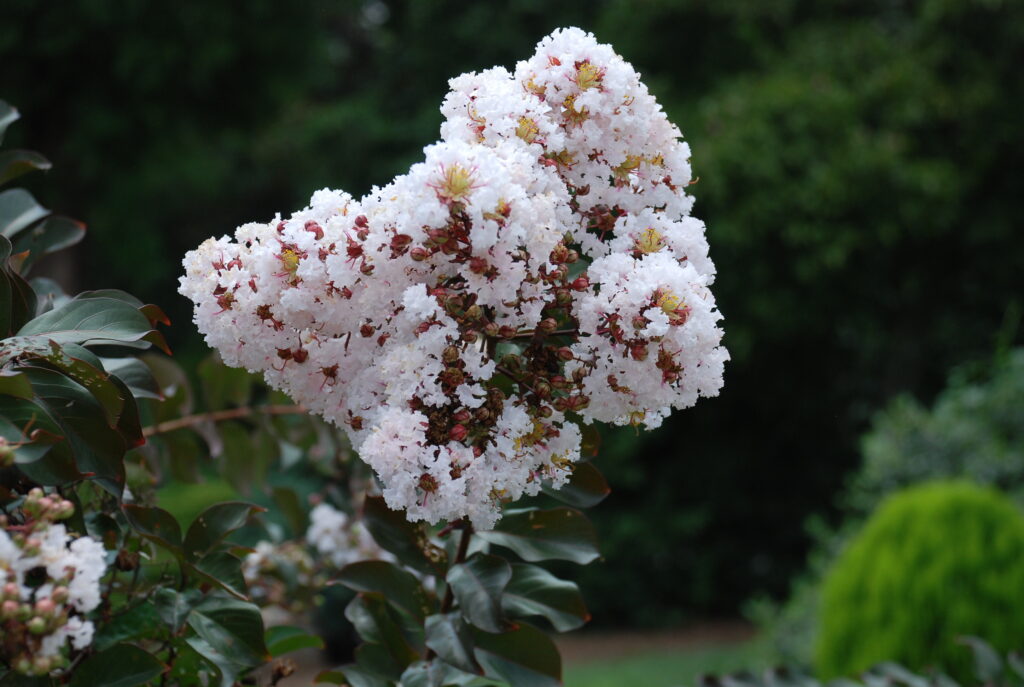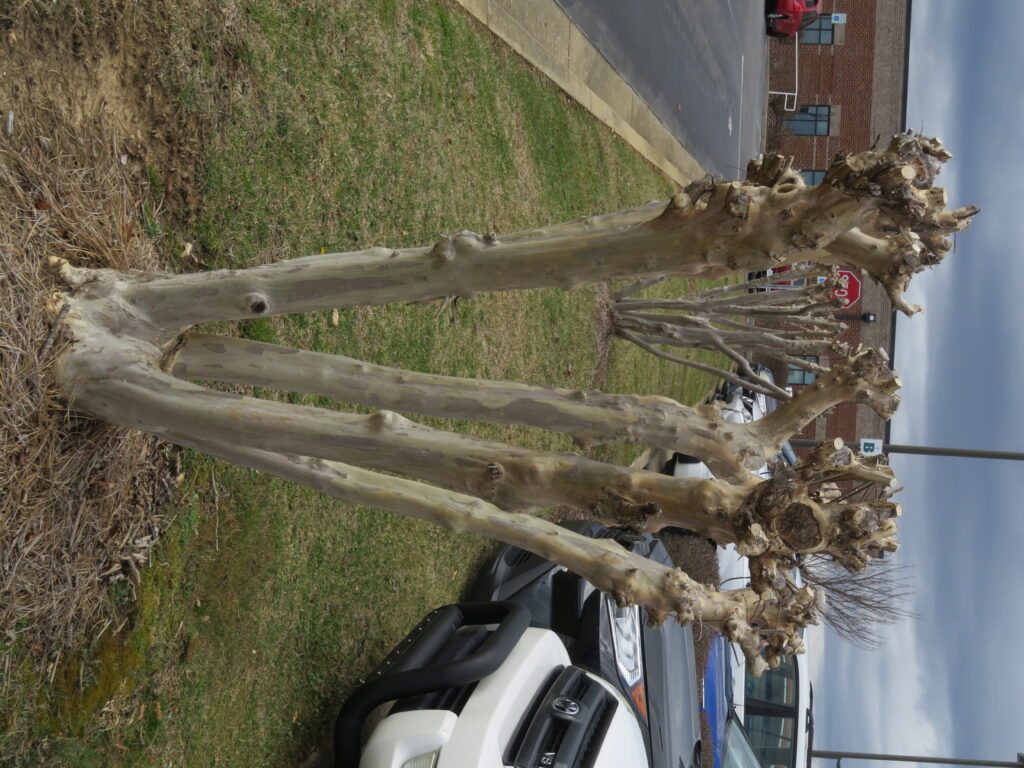Crape myrtle (Lagerstroemia indica) is a species of small, beautiful tree native to Asia, and are popular in Southern U.S. gardens (USDA hardiness zones 6-9). Before planting a tree or shrub form, do your homework first.

So many landscapes wind up with severe and senseless pruning. Crape myrtles wind up with weak shoots and poor flower numbers. Bad pruning can also delay flower development. Ask yourself: “Would you rather have a tree (good pruning) or “a living hat rack” (bad pruning) in your landscape?”
Put down the chainsaw and pick up the hand-held loppers! Crape myrtles are popular for their low-maintenance beauty, but they can benefit from some light pruning this time of year. Pruning crape myrtles to their natural shape. Tools to have on hand: small tree saw, small 5-foot ladder, lopper shears, sharp hand pruners.
According to the plant experts at Mississippi State University, here’s the
correct way to prune a crape myrtle:
· You need sharp pruning tools based on the diameter of the branches and limbs. Use bypass pruners to easily cut back branches up to 3/4 inch in diameter. For branches up to 1 3/4 inches in diameter, use a robust set of loppers. Use a pruning saw on larger branches.
· Nicely pruned crape myrtles should be multi-trunked and well-structured. Maintain an odd number of trunks, such as three or five, looks great and preserves enough space for the tree to produce strong growth.
· Remove any unwanted trunks. Cut them as close to the ground as you can. Next, choose the height where you want the branching to
start and remove lower branches back to the main trunk.
· Remove any branches that are growing into the center of the tree canopy and any crossing or rubbing limbs against each other. This creates space and opens the canopy, reducing the chance of diseases.
· Cut off seed heads to encourage more growth in the spring.
· Finish with the removal of small, thin branches. Remove any suckers that sprout up around the base. Use your hand pruners and cut these off without leaving a stub.

Crapemyrtles come in a variety of sizes and flower colors. Many (not all) show off an ornamental patchwork bark. Before heading to the garden center decide what flower color you want. Shop the internet or find a variety that grows (matures) to the correct height for the garden space and iss winter hardy in your plant zone. Plant crape myrtles almost any time of year with spring / summer being best and fall / winter the worse seasons. There are over 125 varieties listed on the internet. Here are 50 of the best:

Miniature/Weeping: less than 3
feet tall
- Baton Rouge (red)
- Mardi Gras (purple)
- Pixie White (white)
- Pokomoke (deep pink)
Dwarf: 3 – 5 feet tall
- Centennial (purple)
- Dazzle® series (GAMAD I-VII)
- Petite Series (6) Pink Ruffles (pink)
- Tightwad (Whit V) (red)
- Velma’s Royal Delight (purple)
- Victor (dark red)
Intermediate: 5 – 10 feet tall
- Acoma (white)
- Cheyenne (red)
- Hopi (pink)
- Red Rooster (PIILAG III) (rich red)
- Siren Red (Whit VII) (red)
- Tonto (red)
- Zuni (purple)
Medium: 10 – 20 feet tall
- Apalachee (lavender)
- Black Diamond series (9)
- Burgundy Cotton (Whit VI) (white)
- Catawba (purple)
- Centennial Spirit (red)
- Comanche (pink)
- Dynamite (Whit II) (true red)
- Lipan (lavender)
- Osage (pink)
- Pink Velour (Whit III) (pink)
- Powhatan (purple)
- Raspberry Sundae (Whit I) (red/white)
- Regal Red (red)
- Seminole (pink)
- Sioux (pink)
- Tuskegee (pink)
- Yuma (lavender)
Tall: more than 20 feet tall
- Arapaho (red)
- Biloxi (pink)
- Byers Hardy Lavender (lavender)
- Byers Standard Red (red)
- Kiowa (white)
- Miami (pink)
- Muskogee (lavender)
- Natchez (white)
- Potomac (pink)
- Red Rocket (Whit IV) (true red)
- Sarah’s Favorite (white)
- Townhouse (white)
- Tuscarora (pink)
- Watermelon Red (red)
- Wichita (lavender)


 Posted in
Posted in 
